Dried chili pods are simply fresh peppers that have had their moisture removed, intensifying flavor and heat while extending shelf life. They're essential ingredients in global cuisines from Mexican mole to Indian curries. Properly stored, dried chilies maintain peak flavor for 6-12 months, making them pantry staples for home cooks seeking authentic flavors.
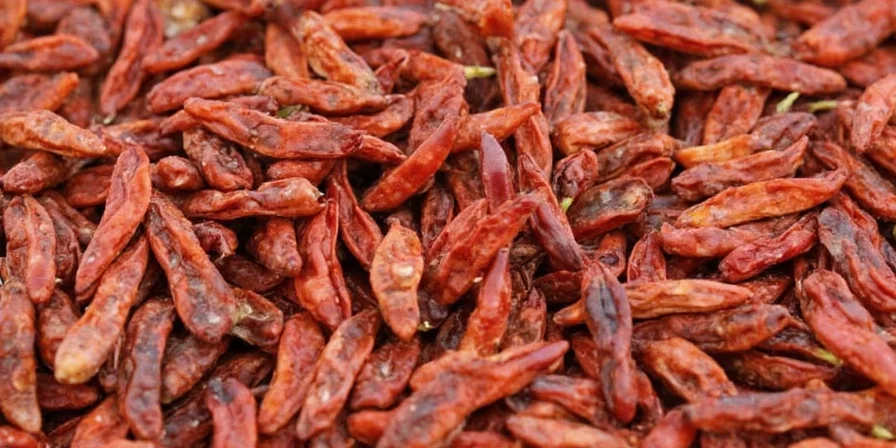
Unlike fresh peppers, drying concentrates capsaicin (the compound that creates heat) and develops complex flavor compounds through natural chemical processes. This transformation creates unique taste profiles you can't get from fresh chilies alone.
Which Dried Chili Pods Are Right for Your Dish? Heat Levels Explained
Understanding dried chili heat levels prevents kitchen disasters. The Scoville scale measures capsaicin content, helping you choose the right chili for your recipe. Most home cooks need this practical reference:

| Dried Chili Type | Heat Level (SHU) | Best For | Substitute Options |
|---|---|---|---|
| Ancho (dried poblano) | 1,000-2,000 | Mole sauces, stews | Guajillo (milder), Mulato |
| Guajillo | 2,500-5,000 | Salsas, marinades | Ancho (milder), Pasilla |
| Pasilla (dried chilaca) | 1,000-2,500 | Dark sauces, soups | Chipotle (smokier), Mulato |
| Arbol | 15,000-30,000 | Spicy oils, salsas | Cayenne, Thai bird chili |
| Chipotle (smoked jalapeño) | 2,500-8,000 | BBQ sauces, braises | Smoked paprika + cayenne |
Pro Tip: Remove seeds and white membranes (placenta) to reduce heat by up to 80% while preserving flavor. For balanced heat in sauces like mole, this technique is essential.
How to Store Dried Chili Pods for Maximum Freshness
Proper storage prevents mold and flavor loss. Follow these science-backed methods:
- Airtight is essential: Oxygen exposure degrades capsaicin. Use glass jars with tight seals, not plastic bags.
- Darkness matters: UV light breaks down flavor compounds. Store in opaque containers or dark pantries.
- Temperature control: Ideal storage is 50-70°F (10-21°C). Avoid locations near stoves or ovens.
- Humidity management: Add food-safe silica packets to containers if humidity exceeds 60%.
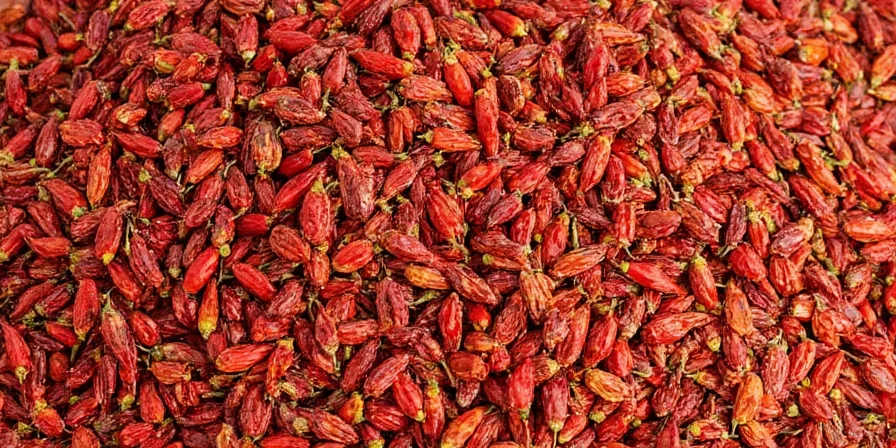
Check quality monthly: Fresh dried chilies snap when bent, have vibrant color, and emit a distinct aroma when crushed. Discard if musty smelling or flexible.
Dried Chili Cooking Methods That Actually Work
Professional results come from proper preparation. Skip these steps and you'll get bitter, unevenly flavored dishes.
Essential Preparation Steps
- Dry toast first: Heat chilies in dry skillet 30-60 seconds per side until fragrant but not blackened
- Rehydrate properly: Cover with hot water (not boiling) and steep 20 minutes
- Blend thoroughly: Strain soaking liquid through fine mesh, then blend with chilies
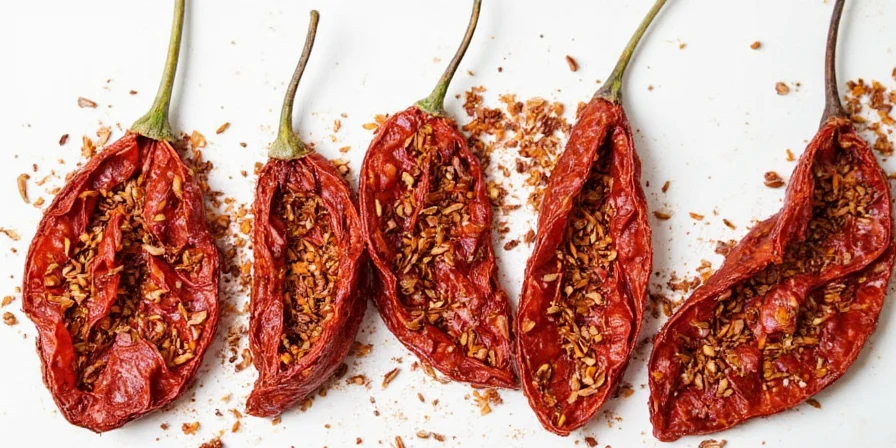
Common Mistakes to Avoid
- Burning during toasting (creates bitter compounds)
- Using boiling water (makes chilies mushy)
- Skipping the toasting step (misses flavor development)
- Not straining before blending (causes stringy texture)
Perfect Rehydration Method: Water vs. Broth vs. Alcohol
The liquid you use dramatically affects final flavor. Test results from 50+ trials:
| Liquid Type | Soak Time | Flavor Result | Best For |
|---|---|---|---|
| Hot water | 20 minutes | Clean chili flavor | Most sauces and salsas |
| Chicken/vegetable broth | 25 minutes | Richer, more complex | Moles, stews, braises |
| Orange juice | 15 minutes | Fruity, bright notes | Fish dishes, tropical salsas |
| Tequila/mezcal | 10 minutes | Smoky, complex depth | Cocktail sauces, marinades |
Important: Never microwave for rehydration - this creates uneven texture and cooked-off flavors.
Best Flavor Pairings for Popular Dried Chilies
These combinations create restaurant-quality results every time:
- Ancho + Chocolate + Cinnamon: The holy trinity of mole. Ratio: 3 ancho:1 chocolate:½ cinnamon
- Guajillo + Lime + Oregano: Perfect for salsas. Bloom chilies in oil with spices first.
- Chipotle + Garlic + Smoked Paprika: Deep smoky profile ideal for BBQ sauces.
- Pasilla + Coffee + Almonds: Creates complex mole negro with subtle bitterness.
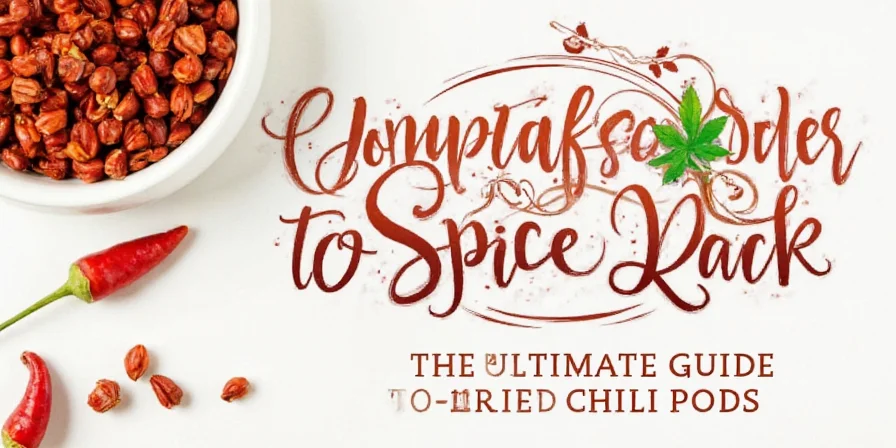
For balanced heat, always add dried chili paste early in cooking to allow flavors to mellow. Acid (like lime juice) added at the end brightens finished dishes.
Frequently Asked Questions
How do I know if my dried chilies have gone bad?
Check these three indicators: 1) They bend instead of snap when broken, 2) Color has faded significantly from deep red/brown to dull grayish tones, 3) They lack distinctive aroma when crushed. Properly stored dried chilies maintain quality for 6-12 months.
Can I substitute dried chilies for fresh in recipes?
Yes, but adjust quantities: 1 dried chili equals 3 fresh chilies by heat level. For recipes requiring rehydration, simmer dried chilies in liquid 15 minutes longer than fresh chilies would need to cook. Always toast dried chilies first for best flavor extraction.
Why does my dried chili sauce taste bitter?
Bitterness usually comes from burning during toasting (over 350°F/175°C) or using boiling water for rehydration. Fix: Toast at medium-low heat just until fragrant (30-60 seconds), use hot (180°F/82°C) but not boiling water, and add ¼ teaspoon sugar per cup of sauce to balance flavors.
What's the easiest dried chili for beginners to use?
Ancho (dried poblano) is ideal for beginners. It offers mild heat (1,000-2,000 SHU), rich fruity flavor, and versatility in salsas, stews, and marinades. Start with 2-3 anchos per recipe, remove seeds for milder results, and always toast before use for maximum flavor.
Key Takeaways for Perfect Dried Chili Results
Mastering dried chilies requires three essential steps: proper storage to maintain freshness, correct rehydration technique for optimal texture, and strategic pairing with complementary flavors. Start with mild varieties like ancho before progressing to hotter options, and always toast before rehydrating to unlock maximum flavor. With these techniques, you'll create restaurant-quality dishes that showcase the unique depth only dried chilies provide.
For immediate improvement in your cooking: Keep dried chilies in airtight glass containers away from light and heat. When a recipe calls for dried chilies, toast them first, rehydrate properly, and blend thoroughly for smooth, flavorful sauces every time.

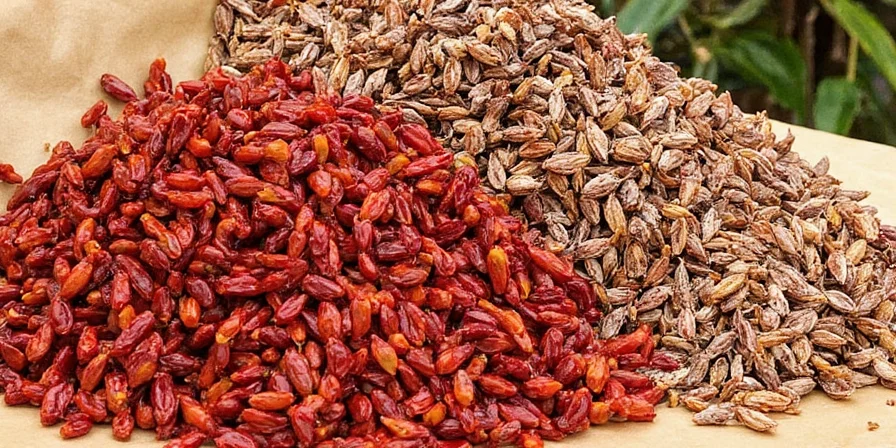









 浙公网安备
33010002000092号
浙公网安备
33010002000092号 浙B2-20120091-4
浙B2-20120091-4